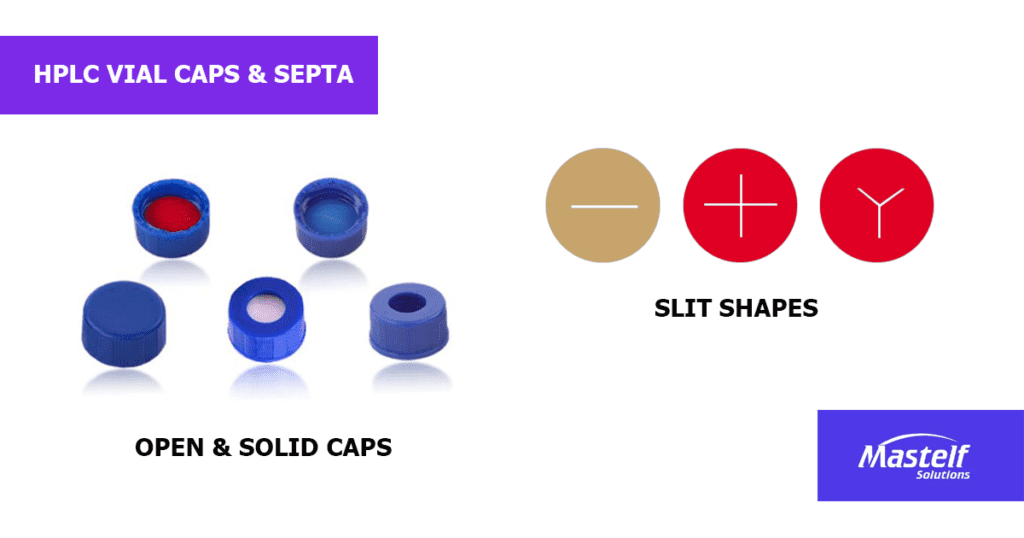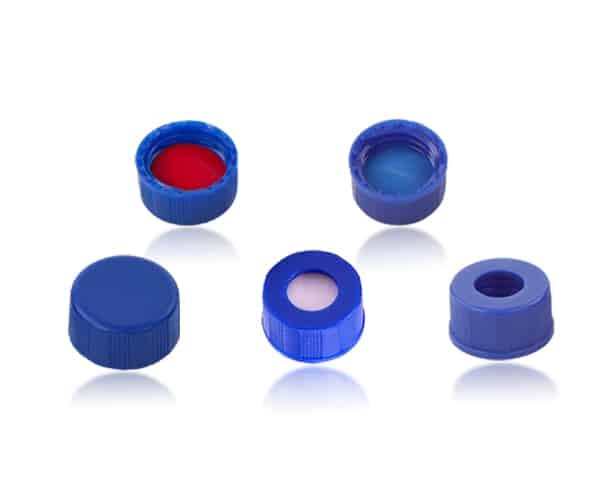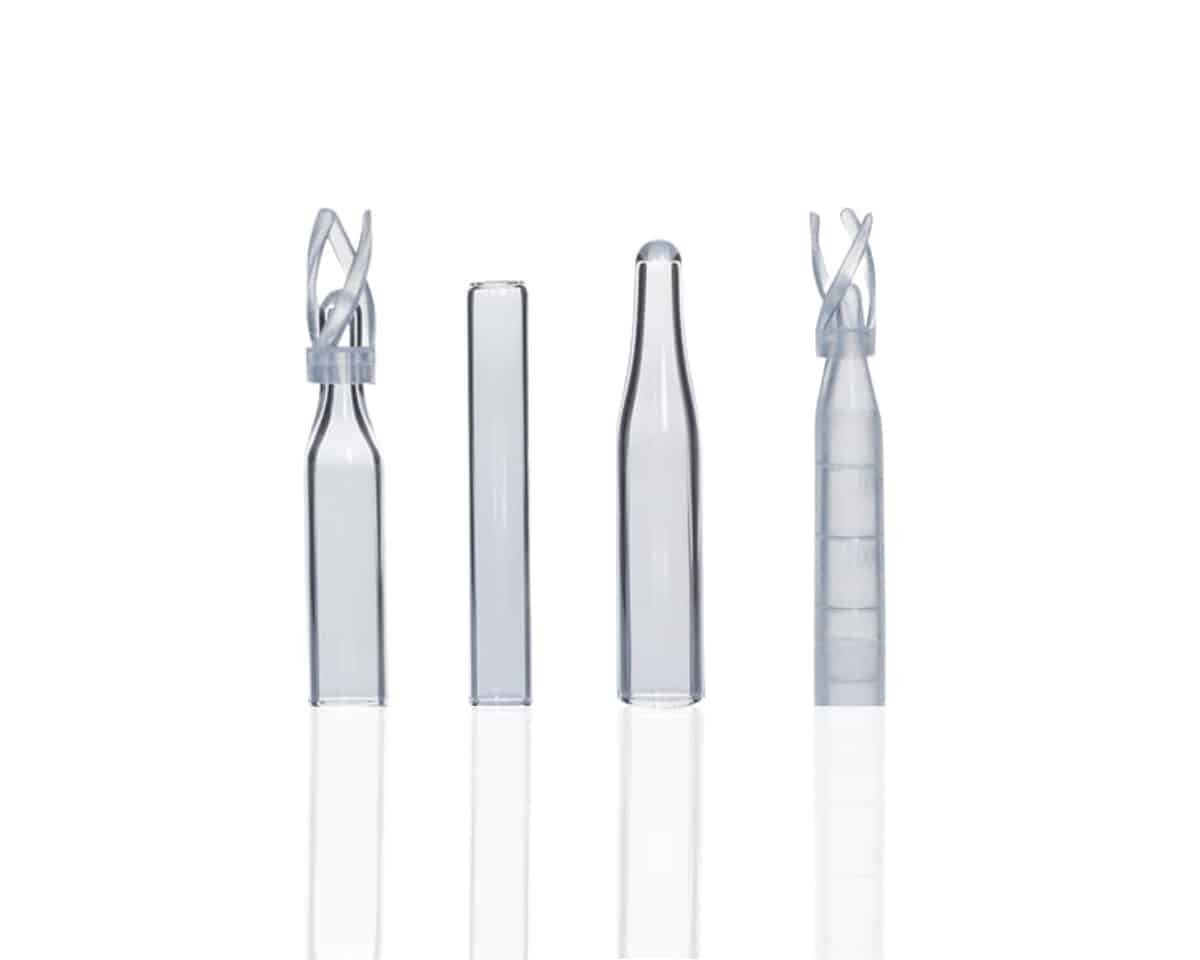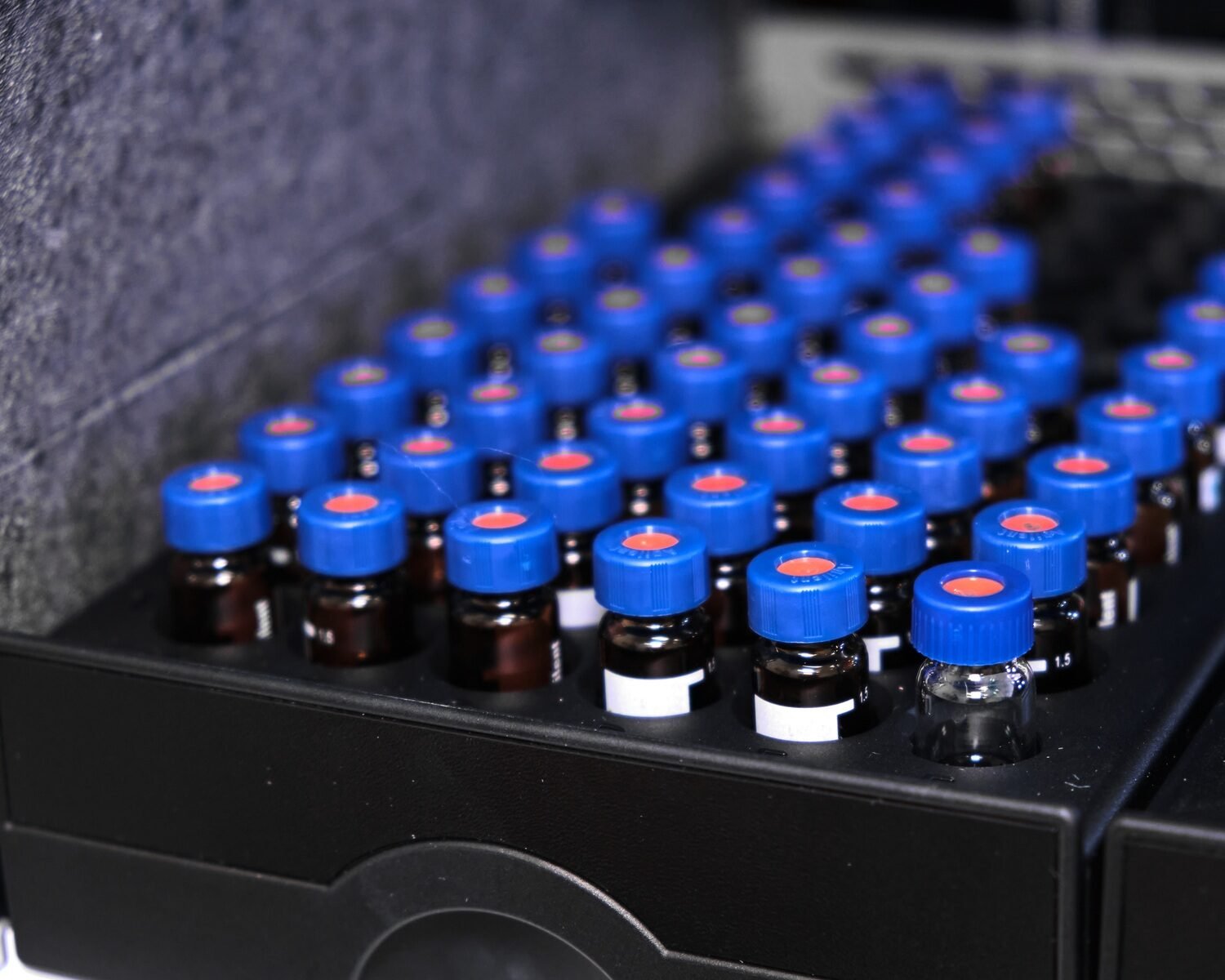In the context of HPLC vials, “septa” refers to the rubber or silicone discs that are used to seal the vials. Septa serve as a barrier to protect the sample from contamination and evaporation, while allowing easy access for the injection needle of the HPLC instrument.

Key Points about Septa:
- Material: Septa are typically made from materials like rubber, silicone, or PTFE (polytetrafluoroethylene). The choice of material can affect the chemical compatibility and sealing performance.
- Function: The primary function of septa is to maintain sample integrity by preventing contamination and evaporation. They provide a resealable barrier that can be punctured by an injection needle multiple times without compromising the seal.
- Types:
- Pre-slit Septa: These have a small slit that facilitates easier needle penetration and reduces the chance of needle bending or breaking.
- Solid Septa: These provide a tighter seal and are typically used for more volatile samples where maintaining the integrity of the seal is critical.
- Compatibility: Different types of septa are used depending on the sample and the solvents involved. For example, PTFE-coated septa are highly chemical resistant and suitable for aggressive solvents.
- Application: Septa are used in conjunction with crimp caps or screw caps to ensure a secure seal on the HPLC vials.
Importance in HPLC:
- Sample Protection: Septa help protect the sample from environmental contaminants and evaporation, ensuring that the integrity of the sample is maintained until analysis.
- Instrument Performance: High-quality septa can improve the performance of the HPLC instrument by providing a reliable seal that prevents leaks and maintains consistent injection volumes.
Practical Tips:
- Choosing the Right Septa: Select septa based on the chemical properties of the sample and the solvents used. Ensure compatibility to avoid sample degradation or contamination.
- Handling: Handle septa with clean gloves to prevent contamination. Avoid touching the area that will come into contact with the sample.
- Storage: Store septa in a clean, dry environment to maintain their quality and performance.
Septa are crucial components in HPLC vials, ensuring that samples are kept secure and uncontaminated, which is essential for accurate and reliable chromatographic analysis.
Conclusion
HPLC is a straightforward and precise process that requires close attention to details, including what type of vials and other specifications you need to use.
There are various septa variations to choose from, which can be daunting. So, with these many septa on the market, how can you select the best one?











